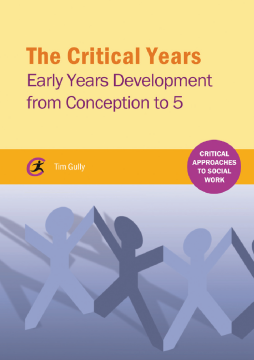
Additional Information
Book Details
Abstract
During the last ten years our understanding of early child development, from conception through to 5, has greatly increased. This includes our understanding of neuro science and brain development, the ability to modify fetal development in the womb and the move away from the traditional debate of nature versus nurture to nature via nurture.
It is vitally important that childcare social workers are fully aware of these issues if we are to intervene successfully to support children in need and children that need protecting. This book introduces the new science while affirming many of the older theories. By linking theories of child development with the law, policy and guidelines, it provides students with a source that will enhance their learning, but also has meaning in day-to-day practice.
I enjoyed reading this book. Very useful information with related case studies and links to theories. Gives a clear view on stages of development with supported references. Very useful book for Early Years practitioners studying level 4-5 easy to read and accessible.
Mehjabeen Shaukat, Tameside College
Tim Gully worked for the Probation Service, NSPCC and in Social Work for 25 years, mostly with dangerous offenders and in child protection, before moving in to higher education. He has taught both social work and early childhood studies and currently teaches at the University of Chichester. His research interests include the making of children from conception to birth, risk society, social pedagogy and child protection in early years. Working with both victims and abusers, he believes that it is essential to see situations holistically so that we can better, understand, intervene and protect children. Internationalism is at the core of his teaching and research and he has been able to teach in Denmark, Romania and Germany, bringing ideas back to include in his teaching in the UK.
A very easy and interesting read with the chapters also useful as stand- alone reading, with the critical reflection sections enabling students to consider the wider aspects of child development and those who work with young children etc. This textbook should also appeal to a wider audience such as local authorities training centres.
Nieca Boynton, Hull University
This book is easy to read, informative and provides clear guidance for students on how children. I like the case studies and the simple signposts to support and encourage students how to critically reflect.
Denise Nannetti, North Hertfordshire College
